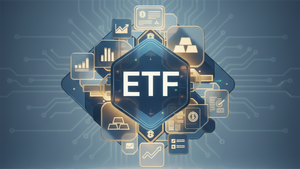
The burgeoning cryptocurrency Exchange-Traded Fund (ETF) market is currently sailing through a period best described as "Neutral," according to the widely followed Crypto Fear and Greed Index. This sentiment reflects a fascinating equilibrium where a wave of institutional optimism, driven by recent regulatory clarity, is carefully balanced against an inherent market volatility that continues to breed caution among investors. The immediate implication is a market in a state of consolidation and reassessment, offering both seasoned and nascent investors a critical juncture to evaluate their strategies.
This "Neutral" standing signifies that the market is neither in a state of extreme euphoria nor deep panic. Instead, it suggests a more measured approach from participants who are digesting recent developments and preparing for potential future shifts, making it a crucial phase for strategic repositioning rather than impulsive trading.
Regulatory Milestones Drive Market Evolution
The current "Neutral" sentiment in the crypto ETF market is largely a consequence of significant regulatory milestones that have both opened doors for institutional participation and underscored the need for continued prudence. The Crypto Fear and Greed Index (FGI) has consistently hovered in the 48-54 range, well within its "Neutral" territory (41-59), signaling a market devoid of extreme emotional swings. This measured environment allows for a deeper analysis of the underlying dynamics at play.
A pivotal development leading up to this point has been the U.S. Securities and Exchange Commission's (SEC) increasingly streamlined approach to approving cryptocurrency-based ETFs. Following groundbreaking approvals for spot Bitcoin, Ethereum, and even XRP ETFs, the regulatory body has shifted its focus from the inherent volatility of the underlying crypto assets to the operational readiness of ETF providers. This change in emphasis has not only expedited the launch of new products but has also provided a robust framework for institutional engagement. Key players, including prominent asset managers like BlackRock, Fidelity, Grayscale Investments, and VanEck, have been at the forefront, launching a suite of products that bridge traditional finance with the digital asset world.
Initial market reactions have been varied yet telling. While Ethereum ETFs, such as the iShares Ethereum Trust (ETHA) from BlackRock (NYSE: BLK) and the Fidelity Ethereum Fund (FETH) from Fidelity, have reportedly attracted substantial inflows, outperforming Bitcoin ETFs in some periods, Bitcoin ETFs have experienced some outflows following recent interest rate cuts by the Federal Reserve. This suggests that investors are not merely pouring fresh capital into the market but are actively repositioning their portfolios in response to evolving macroeconomic policies. Despite the overall neutral sentiment, the institutional embrace signifies a growing legitimization of digital assets within the broader financial ecosystem.
Identifying the Beneficiaries and Those Who Stand to Lose
The evolving landscape of crypto ETFs naturally creates a dichotomy of winners and potential losers, profoundly impacting public and private entities across the financial spectrum. On the winning side, traditional asset managers and financial institutions are paramount. Companies like BlackRock (NYSE: BLK), Fidelity, Grayscale Investments, Bitwise Asset Management, VanEck, and Franklin Templeton (NYSE: BEN), who have successfully launched and gained approval for their spot crypto ETFs, stand to benefit immensely from increased assets under management (AUM) and management fees. Their early entry and regulatory compliance position them as leaders in attracting both institutional and retail capital seeking regulated crypto exposure.
Furthermore, cryptocurrency exchanges that partner with these ETF providers for custody and market surveillance, such as Coinbase Global, Inc. (NASDAQ: COIN), emerge as significant beneficiaries. Their infrastructure is crucial for the secure and compliant operation of these funds, solidifying their role as indispensable components of the new crypto financial architecture. Traditional financial giants like Morgan Stanley (NYSE: MS), Merrill Lynch, Wells Fargo (NYSE: WFC), and JPMorgan Chase (NYSE: JPM) are also poised to win as they increasingly offer clients access to spot Bitcoin and other crypto ETFs, integrating digital assets into mainstream portfolio management. This broadens their service offerings and caters to a growing demand from sophisticated investors.
Conversely, potential losers might include smaller, less regulated crypto projects or altcoins that struggle to meet the stringent requirements for ETF inclusion. The SEC's continued focus on investor protection, anti-money laundering (AML) compliance, and secure custodial arrangements creates a high barrier to entry. Altcoins lacking robust regulatory frameworks or sufficient market depth may face challenges in gaining institutional legitimacy, potentially limiting their growth. Additionally, highly speculative or unregulated trading platforms that thrive on extreme volatility might see reduced activity as investors shift towards regulated, more stable investment vehicles. Individual investors who continue to engage in high-risk, unregulated direct crypto trading without proper due diligence might also find themselves at a disadvantage compared to those utilizing the more transparent and regulated ETF channels.
Broadening Horizons: Industry Impact and Regulatory Echoes
The "Neutral" sentiment within the crypto ETF market, while signaling a temporary pause, actually underscores a profound and ongoing transformation within the broader financial industry. This event is not an isolated incident but rather a crucial chapter in the increasing convergence of traditional finance (TradFi) and decentralized finance (DeFi). The formalization of crypto exposure through ETFs legitimizes digital assets in the eyes of many institutional investors and mainstream audiences, effectively bridging a long-standing gap. This integration sets a precedent for how nascent, technologically driven asset classes can mature and find their place within established regulatory and investment frameworks.
The ripple effects extend far beyond the immediate sphere of ETF providers. Competitors, even those not directly offering crypto ETFs, are compelled to re-evaluate their strategies regarding digital asset exposure. Companies like Block Inc. (NYSE: SQ) and PayPal (NASDAQ: PYPL), which already have significant blockchain and digital payment exposure, could see increased validation for their initiatives as the underlying crypto market gains broader acceptance. Furthermore, the regulatory clarity demonstrated by the SEC's evolving stance – shifting from questioning the inherent volatility of crypto to focusing on the operational readiness and investor protection mechanisms of ETF products – will likely influence policy-making across other jurisdictions globally. This shift not only streamlines the approval process but also sets a benchmark for future digital asset regulations.
Historically, this trend echoes the early days of commodity ETFs, such as gold ETFs, which revolutionized how investors accessed previously niche or complex asset classes. Just as gold ETFs democratized access to the precious metal, crypto ETFs are doing the same for digital currencies, albeit with the added complexities of a rapidly evolving technological and regulatory landscape. These developments represent a maturation of the crypto market, signaling a long-term trend towards institutionalization and mainstream adoption, moving beyond its speculative origins.
The Road Ahead: Opportunities and Challenges
Looking ahead, the "Neutral" stance of the Crypto Fear and Greed Index suggests a period of strategic recalibration rather than stagnation. In the short term, market consolidation is likely to persist, with major cryptocurrencies potentially trading within tighter ranges. This environment creates both opportunities for discerning investors and challenges for those accustomed to extreme volatility. Upcoming SEC decision deadlines for various altcoin ETF applications, especially for assets like Solana or other prominent digital currencies, are expected to be key catalysts for market movement. Regulatory outcomes on these fronts will significantly influence investor sentiment and the diversification of crypto ETF offerings. Macroeconomic headlines, particularly those concerning the Federal Reserve's monetary policy and potential future interest rate adjustments, will continue to exert a substantial influence on the demand for crypto ETFs.
In the long term, the trajectory points towards continued institutional integration and a broader diversification of crypto-related investment products. We can anticipate the emergence of more sophisticated crypto ETFs, potentially including those with staking rewards or more complex derivative strategies, as the market matures and regulatory frameworks evolve. This will present new market opportunities for innovative financial products and services. However, challenges will remain, primarily centered around managing the inherent volatility of cryptocurrencies, ensuring robust cybersecurity, and navigating the ever-present threat of regulatory shifts. Strategic pivots for existing financial institutions might involve deeper dives into blockchain technology, developing proprietary crypto analysis tools, and enhancing risk management frameworks specifically tailored for digital assets. For companies like MicroStrategy (NASDAQ: MSTR), whose corporate strategy is deeply tied to Bitcoin holdings, the sustained health and growth of the ETF market are crucial.
Potential scenarios range from a gradual, steady ascent driven by sustained institutional inflows and further regulatory clarity, to periods of renewed volatility triggered by unforeseen geopolitical events or adverse macroeconomic data. The key will be adaptability and a focus on fundamental value rather than speculative fervor.
Conclusion: A Market in Measured Transition
The current "Neutral" sentiment in the crypto ETF market encapsulates a pivotal moment of transition—a careful balance between the undeniable allure of a maturing asset class and the enduring need for caution. The key takeaway is a market that, while not experiencing meteoric surges or panic-driven sell-offs, is undergoing significant structural shifts driven by increasing regulatory clarity and growing institutional acceptance. This equilibrium reflects a collective reassessment by investors, positioning the market for potentially more sustainable, albeit less dramatic, growth.
Moving forward, the market is poised to be shaped by a continuous interplay of institutional capital flows, evolving regulatory landscapes, and broader macroeconomic factors. The steady influx of regulated products, particularly from major players like BlackRock and Fidelity, is lending unprecedented legitimacy to cryptocurrencies. This institutional embrace is likely to underpin a gradual but significant expansion of the market, fostering greater stability and accessibility for a wider array of investors.
Investors should closely monitor several critical indicators in the coming months. These include further regulatory pronouncements from the SEC, particularly regarding new altcoin ETF applications, as well as any shifts in global monetary policy that could impact risk assets. Additionally, observing the inflow and outflow trends of existing crypto ETFs will offer valuable insights into investor sentiment and capital allocation. The market is not stagnant; rather, it is in a state of measured evolution, demanding a disciplined, informed, and strategic approach from all participants. The era of the crypto ETF is cementing digital assets as a legitimate, albeit still dynamic, component of the global financial architecture.






